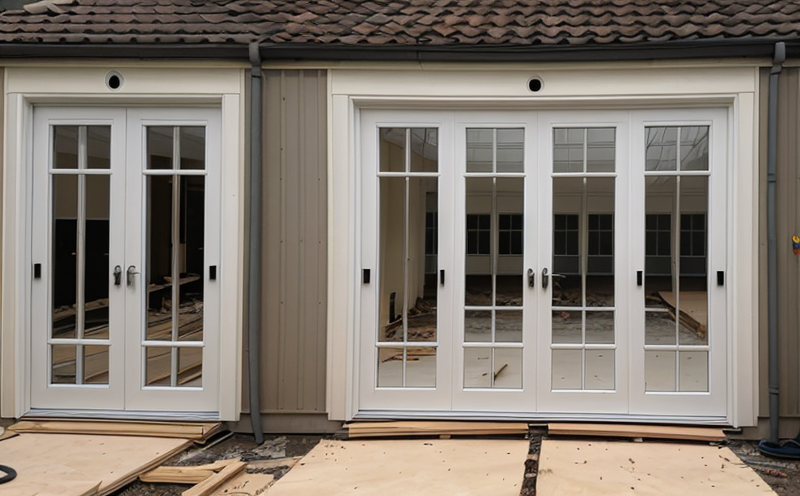Fire Performance Testing of Door Latches and Locks
In fire safety testing, door latches and locks play a critical role in ensuring that doors can be closed and sealed effectively during emergencies. This service involves the evaluation of door hardware components such as hinges, springs, handles, and locks to ensure they perform according to the relevant standards for fire resistance.
The purpose of this testing is to assess how well these components contribute to the integrity of a building's fire barrier when exposed to high temperatures. Fire doors are often required by regulations to withstand certain periods of exposure to flames before failing, which means that their latches and locks must be robust enough to prevent the door from opening unintentionally under extreme conditions.
Testing these components helps ensure compliance with national and international standards such as ASTM E1360, EN 12951, and ISO 14690. These standards set specific requirements for the performance of fire doors in terms of time ratings (e.g., 30 minutes, 60 minutes) based on their intended use.
During testing, specimens are subjected to controlled environments that simulate real-world conditions they may encounter during a fire event. This includes exposure to temperatures ranging from 500°C up to over 1200°C for extended periods (depending on the rating). The test setup typically consists of an enclosed chamber where the door and its hardware is placed, with one side being exposed to heat while the other remains unexposed.
The integrity of the door assembly is monitored through various methods including visual inspections, pressure measurements inside the chamber, and checking for any gaps or breaches in the seal. If any part fails during testing—such as failing to maintain a fire rating after exposure—the entire system may not meet code requirements.
Testing also evaluates how well the latch engages with its corresponding strike plate once the door is closed. Proper engagement ensures that even under intense heat, the door remains securely fastened in place. Failures here could lead to compromised structural integrity of fire doors.
Why It Matters
The importance of proper fire performance testing cannot be overstated, especially when it comes to door latches and locks. These components are integral parts of fire safety systems designed to protect occupants during emergencies. Ensuring they function correctly can significantly enhance the effectiveness of fire doors in containing smoke and flames.
Compliance with relevant standards is crucial not only for legal reasons but also because it directly impacts public safety. Non-compliant hardware could fail during critical moments, leading to life-threatening situations inside buildings where fires break out. By conducting thorough testing, we can identify potential weaknesses early on and address them before they become hazards.
Moreover, this service supports broader goals related to environmental sustainability by promoting the use of durable materials that are less likely to degrade prematurely under extreme conditions. This reduces waste associated with frequent replacements and aligns with global efforts towards more sustainable construction practices.
Environmental and Sustainability Contributions
The environmental aspect of fire performance testing extends beyond just ensuring compliance; it also contributes positively to sustainability initiatives. Using high-quality materials for door latches and locks that undergo rigorous testing ensures longevity, which inherently reduces waste from frequent replacements.
- Longevity: Durable hardware lasts longer than substandard components, reducing the frequency of replacements needed over time.
- Energy Efficiency: Properly functioning fire doors help contain heat and smoke within a structure, potentially lowering energy consumption required for cooling or ventilation post-fire events.
Additionally, by promoting adherence to strict standards like those mentioned earlier, this service encourages manufacturers to innovate using eco-friendly materials without sacrificing performance. This shift towards sustainable practices benefits both the environment and future generations who rely on safe buildings during emergencies.
Use Cases and Application Examples
| Application | Description |
|---|---|
| Commercial Buildings | Incorporating fire doors with tested latches and locks in office spaces ensures that employees have safe routes to exits during emergencies. |
| Hospitals | Testing ensures that patient areas remain secure while allowing rapid evacuation if necessary, protecting both staff and patients from smoke inhalation or other dangers. |
| Data Centers | Robust fire door hardware helps safeguard critical infrastructure against potential threats such as electrical fires. |
| Residential Properties | Ensuring that every home has properly tested fire doors enhances overall safety for residents, particularly those with elderly or disabled members who may need assistance evacuating quickly. |





